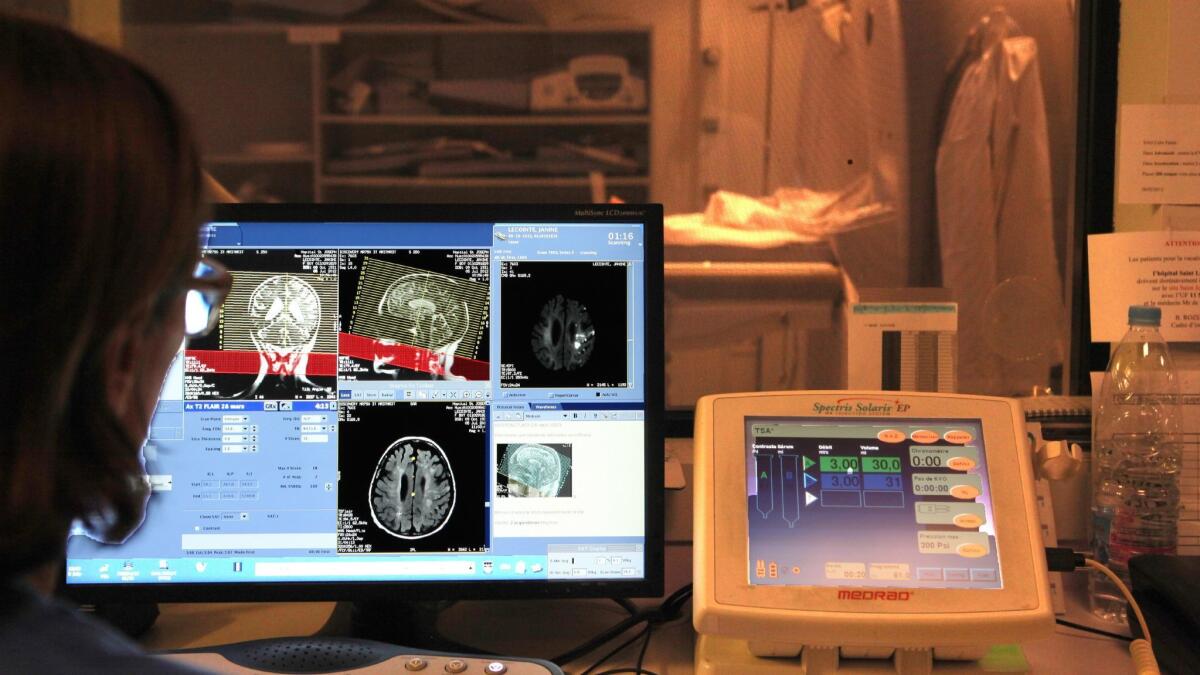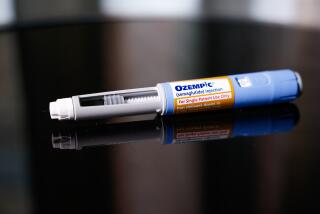To prevent recurrent strokes, should aspirin have a wingman? Maybe not

When it comes to preventing the formation of potentially deadly blood clots in people at elevated risk for them, there are no easy answers.
That’s the upshot of a clinical trial involving patients who suffered a stroke that resolved quickly and caused no lasting damage.
For these patients, adding the anti-platelet drug Plavix to usual aspirin therapy drove down some serious risks, but increased the chances of bleeding events. A second study found that an anticoagulant drug known as Xarelto performed no better than aspirin alone in heading off strokes and heart attacks after a small stroke, and also drove up subjects’ risk of bleeding.
People who’ve had a small stroke or a transient ischemic attack — a TIA — may count themselves lucky. But they have effectively been put on notice: Their risk of a more serious stroke or other cardiovascular disaster is far higher than average.
At some point in the next five years, close to 13% of such patients will suffer a larger stroke or heart attack. And for about 6%, that dangerous event will come in the first year after their close call.
Doctors have been trying for years to put that warning to good use, getting people who’ve had minor ischemic strokes or TIAs on medications to drive down the likelihood that “the big one” will follow.
In the 1980s, researchers found that aspirin, which is a blood thinner as well as a pain reliever, works powerfully to prevent those so-called secondary strokes. As new blood-thinning medications that work in different ways have become available, doctors have hoped they might do even better than aspirin, or work with aspirin to boost its stroke-prevention powers.
Still, prescribing blood-thinners alone or in combination can be tricky, since preventing the formation of stroke-inducing clots can also increase the risk of serious bleeding events that require hospitalization and blood transfusions.
This unwanted bleeding usually occurs in the gastrointestinal tract. But for some unlucky patients, it happens in the brain — and that can be disabling or deadly.
To understand the balance of benefits and risks, researchers conducted a large, multinational clinical trial to assess the use of Plavix (also known as clopidogrel) alongside aspirin for preventing secondary strokes.
They found that in the 90 days following a minor stroke or TIA, this dual therapy reduced patients’ risk of a major heart attack or stroke from 6.5% to 5%. But there was a cost: In the same period, the proportion of patients who suffered a major hemorrhage more than doubled, from 0.4% to 0.9%.
That danger prompted the clinical trial to be ended early — typically a blow to the safety profile of a therapy under review.
A related study found that the anticoagulant Xarelto (also known as rivaroxaban) was no better than aspirin at preventing stroke recurrence in patients who had already suffered an ischemic stroke. But the risk of major bleeding events was twice as high in those who took Xarelto than in those who got aspirin.
Both studies were presented this week at the European Stroke Organization Conference in Gothenberg, Sweden, and published simultaneously in the New England Journal of Medicine.
In the dual-therapy study, the authors estimated that for every 1,000 patients who are treated with the aspirin-Plavix combination for 90 days, roughly 15 additional “ischemic events” could be prevented. But compared to aspirin alone, the combination therapy would cause five extra major hemorrhages.
The benefit of dual therapy was concentrated in the first month of the trial. But the heightened risk of hemorrhage remained relatively constant throughout the 90-day period.
Such findings may slow the adoption of a drug regimen now being widely prescribed to patients who have suffered a TIA or a small stroke.
That practice gained momentum after the publication in 2013 of a large clinical trial conducted in China. It found that patients who suffered a TIA or small stroke were 32% less likely to have a recurrence in the next 90 days if they took aspirin plus Plavix than if they got aspirin alone. And it found no significant increase in the risk of a major bleeding event.
The new trial confirms that “you do get benefit from a combination agent,” said Dr. Walter J. Koroshetz, director of the National Institute of Neurological Disorders and Stroke. But that’s not the whole story.
Neurologists sometimes minimize the risk of bleeding events by pointing out that “you can always replace blood cells; you cannot replace brain cells,” Koroshetz said. Still, he added, future trials may have to explore whether a shorter period of treatment — perhaps two weeks rather then 90 days — might yield similar benefits with fewer bleeding risks.
Koroshetz and other stroke experts said the new results should focus neurologists on some key factors to consider in recommending a drug regimen for prevention of secondary strokes.
Chief among these factors is the likely cause of the small stroke that served as a wake-up call — whether the clot formed in the heart and moved to the brain (the result of atrial fibrillation or a faulty heart valve, for instance), spawned in the brain’s large arteries, or resulted from diseased small blood vessels of the brain. (In the new study, most strokes were in the third category.)
“Stroke care starts with an expert evaluation,” said Dr. Jason Hinman, a neurologist and researcher at UCLA. Along with family and personal health history, the stroke’s origin — if it can be pinpointed — can help a doctor know whether a treatment other than aspirin alone might prevent the big one.
For patients, the study also underscores the importance of checking back with a specialist to make sure the drug regimen you started with is still the one you should be on.
Some patients are put on an aspirin-and-Plavix regimen by the emergency department physician who treats their small stroke or TIA. After that, the patient follows up with a rehabilitation specialist or their primary care doctor.
“If there’s a message for patients, it’s reach out to your practicitioner,” Hinman said. ”There’s some risk associated with these therapies. Patients may need to find out if there’s continued benefit.“
MORE IN SCIENCE
Health officials launch ambitious plan to rid the world of trans fats
Strange readings from a dead spacecraft reveal new evidence of water on Europa
Did drug company payments to doctors help fuel the opioid epidemic?







